Timeline
- 00:11 How to draw basic forms in 3D is easy!
- 00:28 Sketching Workshop format for beginners
- 01:01 The 3 basic shapes of Squid Game (Square, Triangle, and Circle)
- 01:15 How to draw the four 3D forms (Cube, Pyramid, Cylinder, and Sphere)
- 02:05 Draw from 2d shapes into 3D volumes
- 02:31 Pyramid form with 4 faces
- 03:22 The top view of a cylinder is a circle
- 03:33 When a circle becomes an ellipse in perspective
- 04:58 Drawing contour lines on a sphere, the easy way
- 05:58 Add line weight to the cylinder
- 06:07 Special guest: Lucy!
- 06:29 The Master cube is the base of any form!
- 06:43 Download your Designer Starter Kit (Make your first steps in perspective)
- 06:54 Horizon line = Eye Level
- 07:27 Take an object to view in front of your eye level
- 08:09 The 5 primary positions of a product and the horizon line
- 10:24 How to duplicate a cube in perspective
- 12:57 How to draw a cube’s contour lines
- 15:20 Use a cube to draw a pyramid
- 19:36 With a cube, draw the pyramid from any angle
- 21:08 Draw a sphere fast and easily with contour lines
- 27:04 Draw a cylinder and its variations easily
- 28:26 Assemble basic shapes to create advanced 3d forms
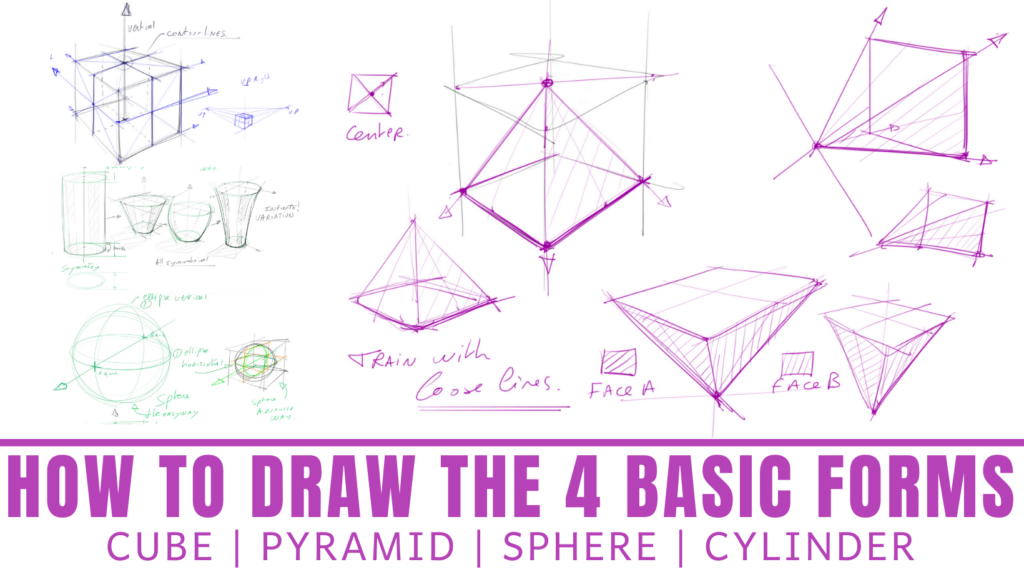
You want to draw your ideas from imagination,
but you can’t visualize anything in 3D volume?
Don’t worry, we can fix this. 🙂
It all starts from drawing these 4 basic volumes only!
These use simple geometry.
- The cube,
- The pyramid,
- The sphere
- And the cylinder.
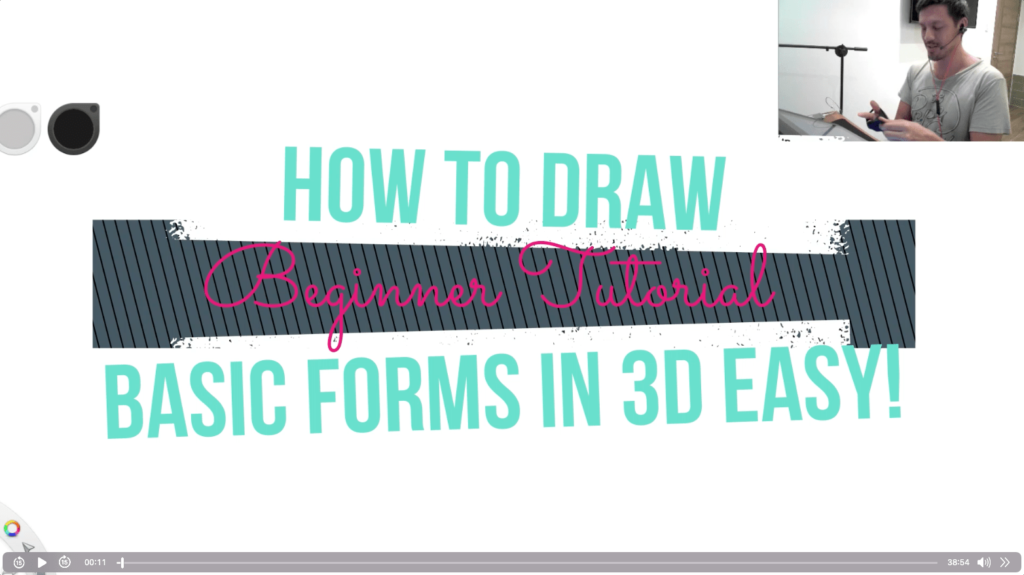
The 4 Basic Forms to Learn How to Draw (in Art and Design)
1. Let’s start the sketching workshop (for beginners)
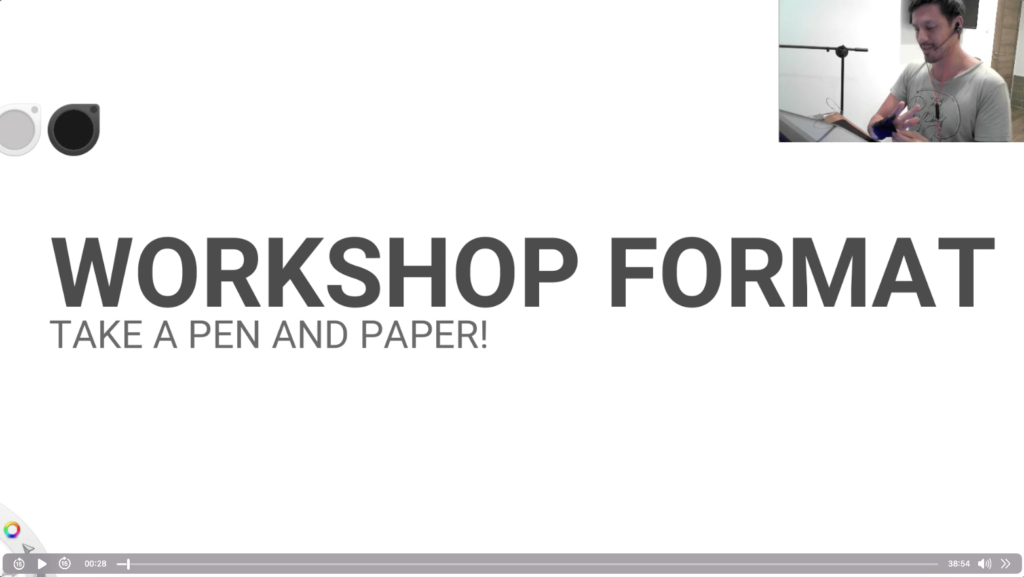
- I wanted to try this new video tutorial format.
They are longer though but cover more of the topic. - Let me know if you would like to get more of these video formats by email or in the comments! 🙂
2. The 3 basic shapes: Square, Triangle, and Circle

- Basic sketching starts with these 3 simple forms only!:
They are the cube, the pyramid, and the circle.

- Complete this sketching mission today:
Learn “How to draw 3-dimensional forms (from the three 2-dimensional shapes”).
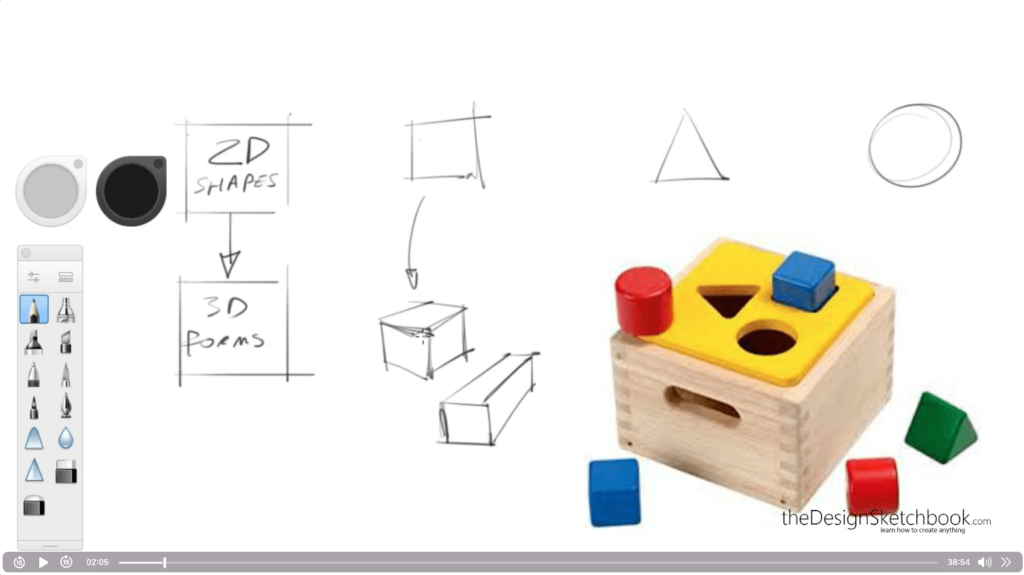
- Visualize the kid’s wooden toy.
- The 3D volumes have to go through a 2D cutout of the game.
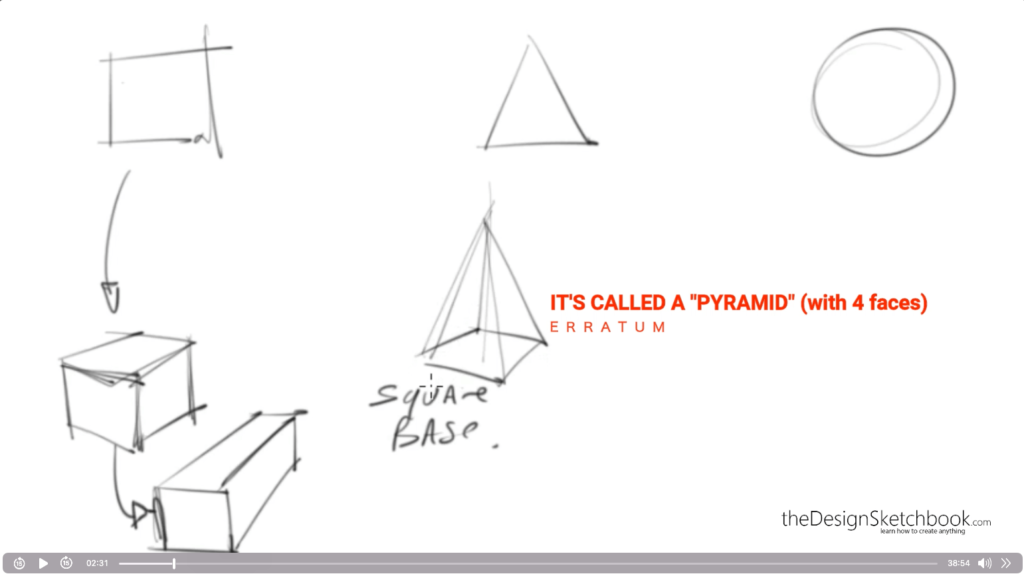
- The square becomes a cube
- The triangle becomes a pyramid
- The circle becomes a sphere or a cylinder
3. Master these 4 Sketching tips! (I use them every day!)
TIP 1 How a circle becomes an ellipse in perspective.

- Take a cup (best if transparent)
- Observe the top of its cylindrical form.
- You get a perfect circle shape.
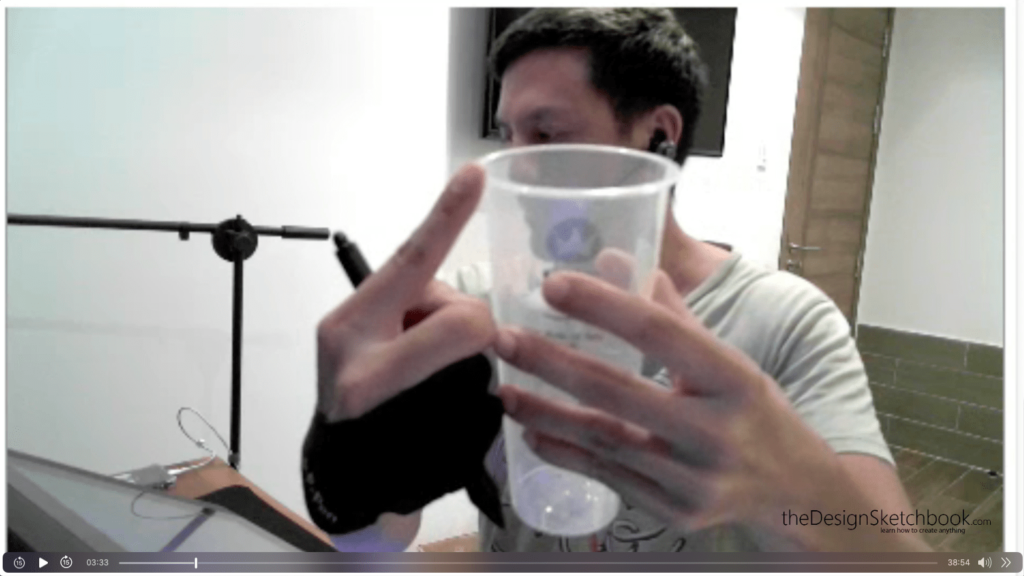
- Tilt slowly the cylinder (the cup)
- The circle becomes visually an ellipse
TIP 2 Draw “invisible lines” to create volumes fast
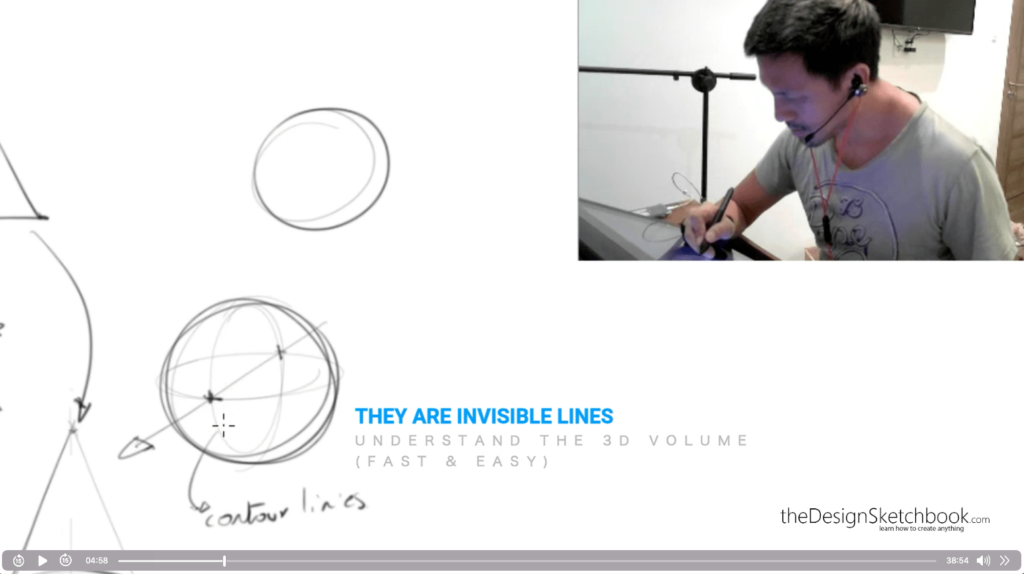
- You need a few seconds only to draw a sphere with this technique.
- Draw a horizontal ellipse and a vertical ellipse to your circle
- Spot the front and behind intersections
- Add a cross for each to show more clarity.
- Connect the intersections with an arrow.
- To practice more: How to draw a sphere with the XYZ axis?
TIP 3 Use line weight to clarify your sketches
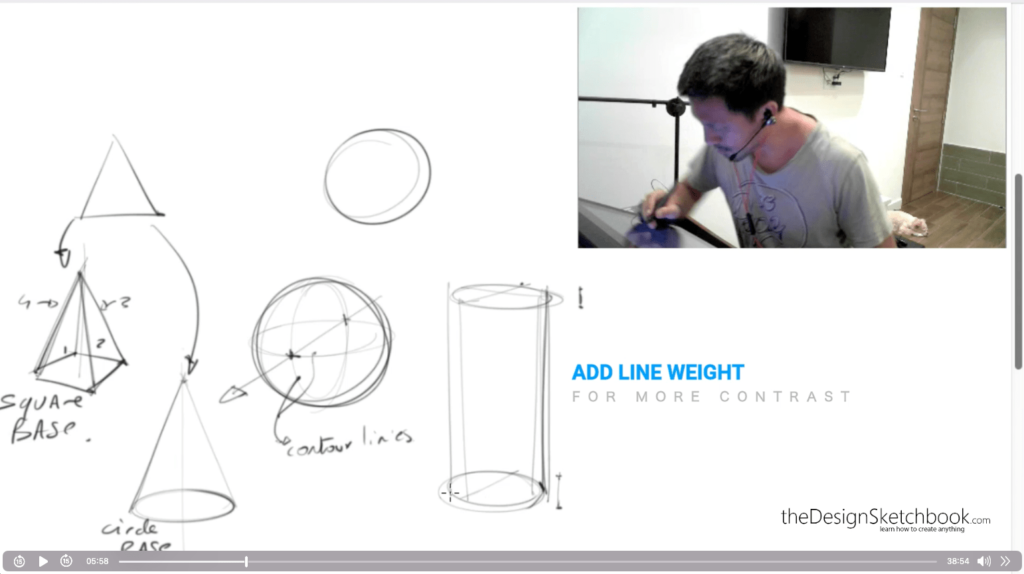
- TIP: Add line weight to your volumes to show more contrast.
- Remember to always start your sketches with a line pen pressure.
- To practice more: How to draw with line-weight?
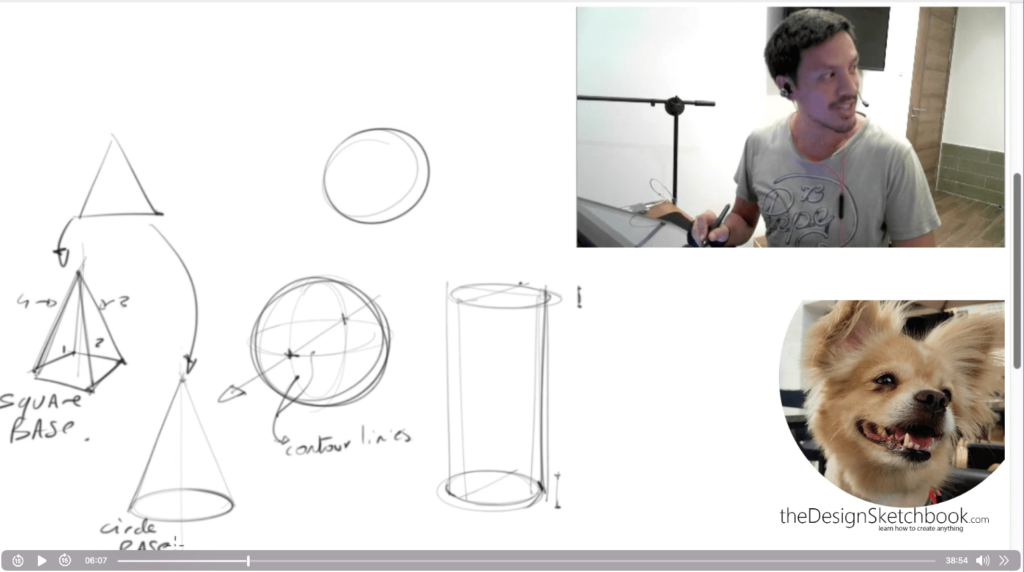
- Lucy is looking for attention 🙂
- Don’t get distracted, and keep sketching!
TIP 4 The cube is the “Primary base” to draw anything! (Master it asap!)
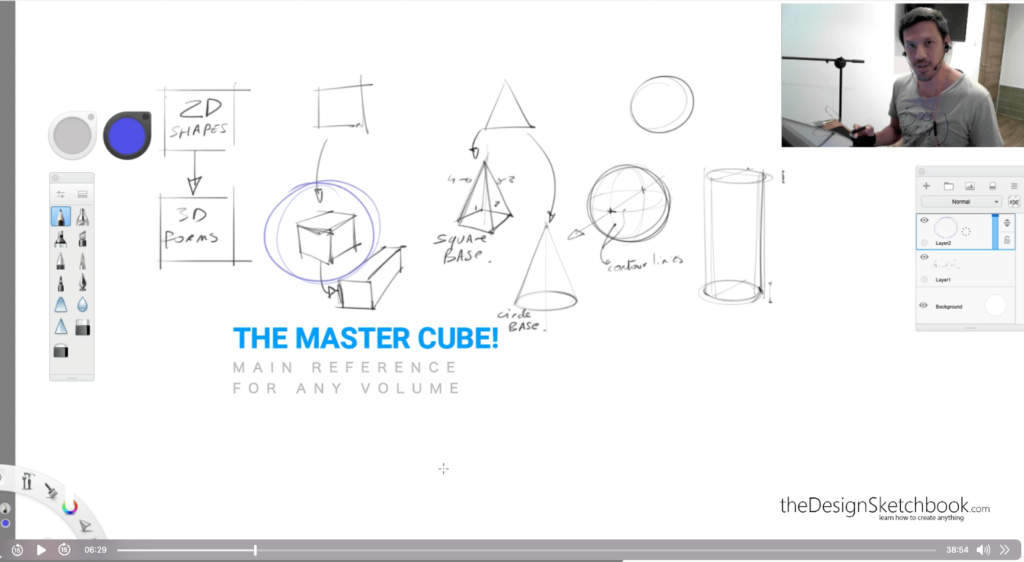
- The cube is the base of any 3d volume.
- Study the cube till you master it in perspective.
- It is so essential, I call it the “Master Cube”!
- To learn more: How to draw a cube with a 2-point perspective

- To learn how to draw a cube in perspective, get your free guide. It’s free!
- You learn step-by-step how to draw a cube from any angle.
- Plus many more sketching tips for beginner artists and designers!
4. How to visualize the “Horizon line” (to start in perspective)
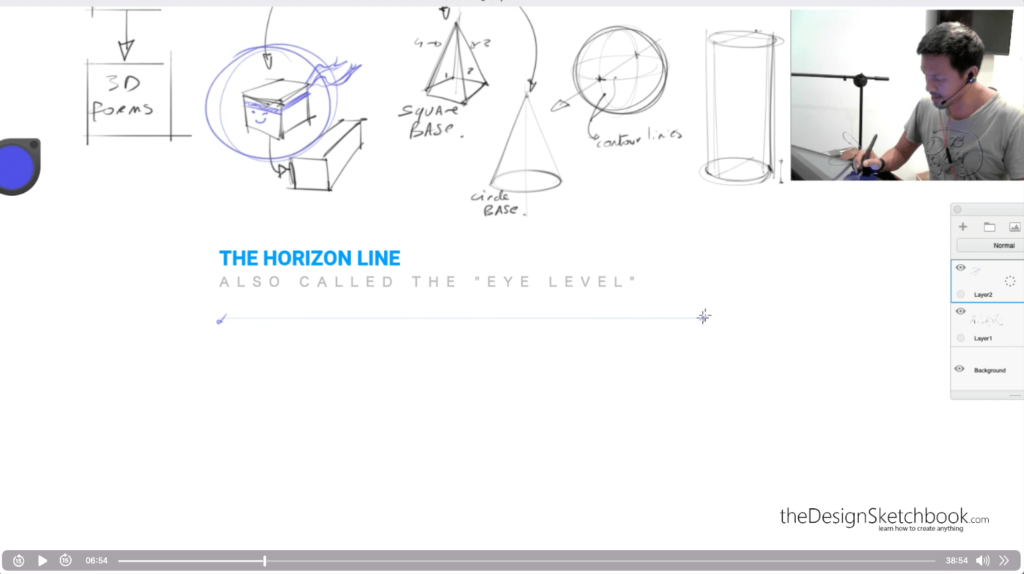
- Visualize the horizon line as a guide.
- It helps to decide the viewpoint.
- To practice more:
How to spot the horizon and converging lines?
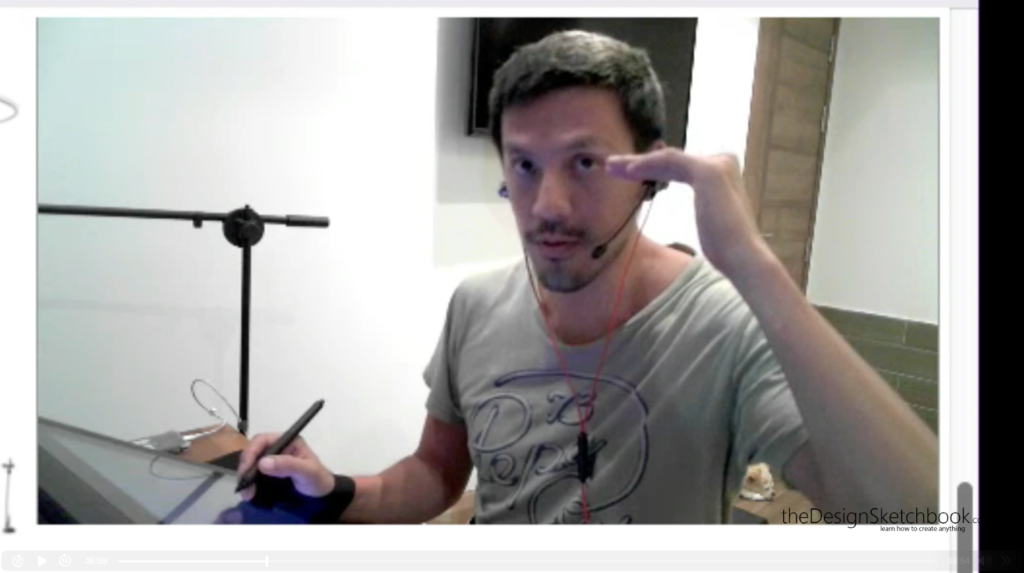
- The horizon line is also called “eye level”.
- It is basically from the viewer’s position.
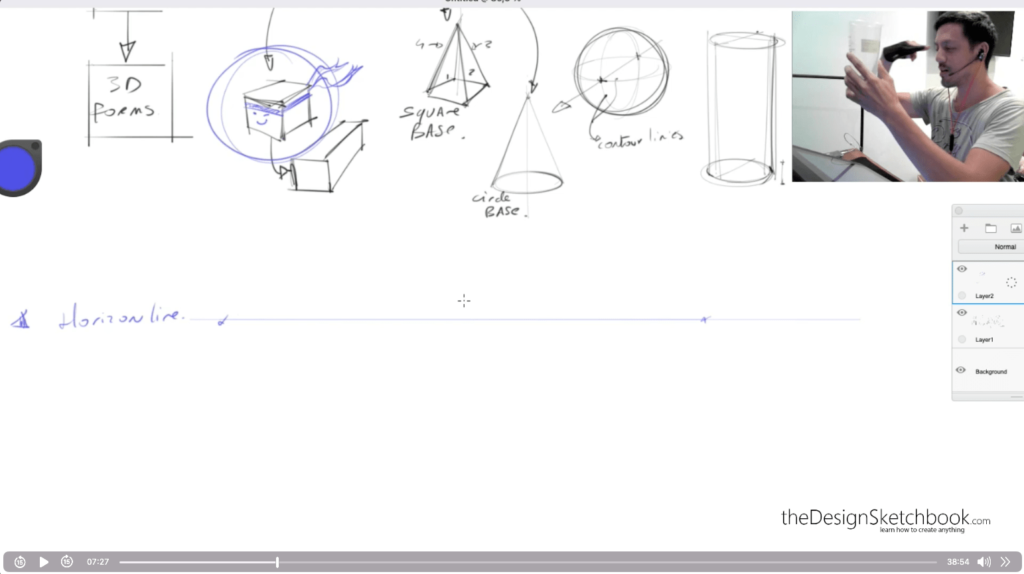
- Take an object, and place it in front of your eye.
- That would be the frontal view of your product.

- Move the object in 4 directions: Up, down, left, right
- Draw its position with the horizon line
5. How to duplicate a cube in perspective (simple geometry)
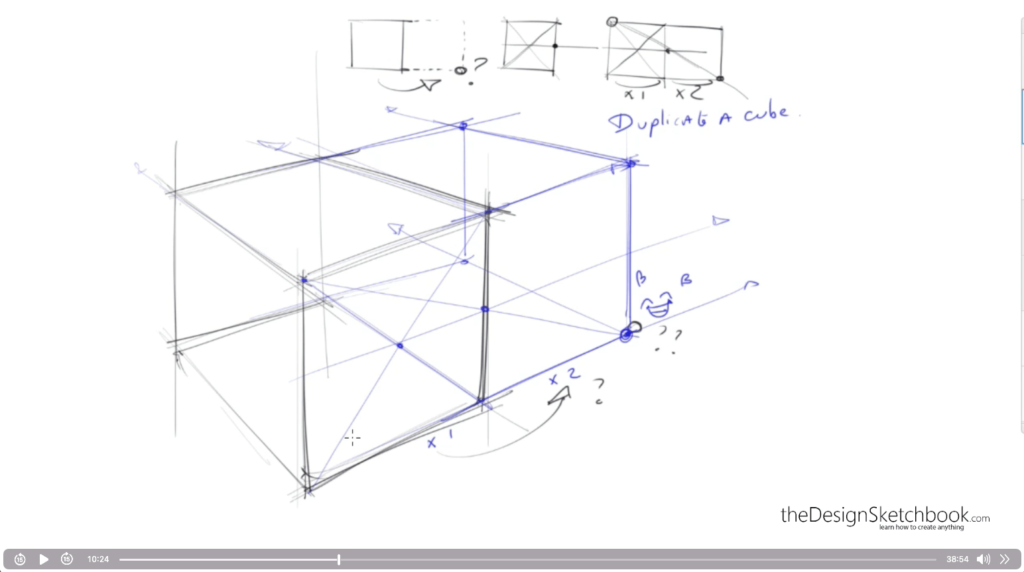
- We cover a “duplicating tutorial of a square” in 2D first.
- Then we apply the same technique in perspective to duplicate the exact same cube.
6. Divide a cube using simple geometry (and create advanced forms)
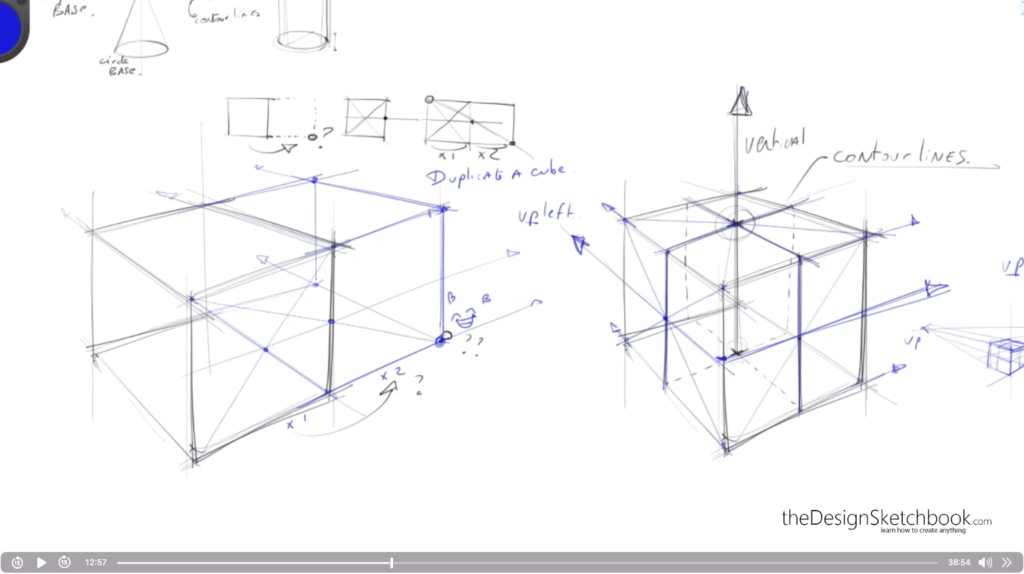
- Drawing is all about simple geometry.
- Divide the cube using diagonals to find the contour lines.
- To practice more: The cube Mania Challenge! (3 videos tutorial)
7. Start drawing a pyramid (using the cube as a base)
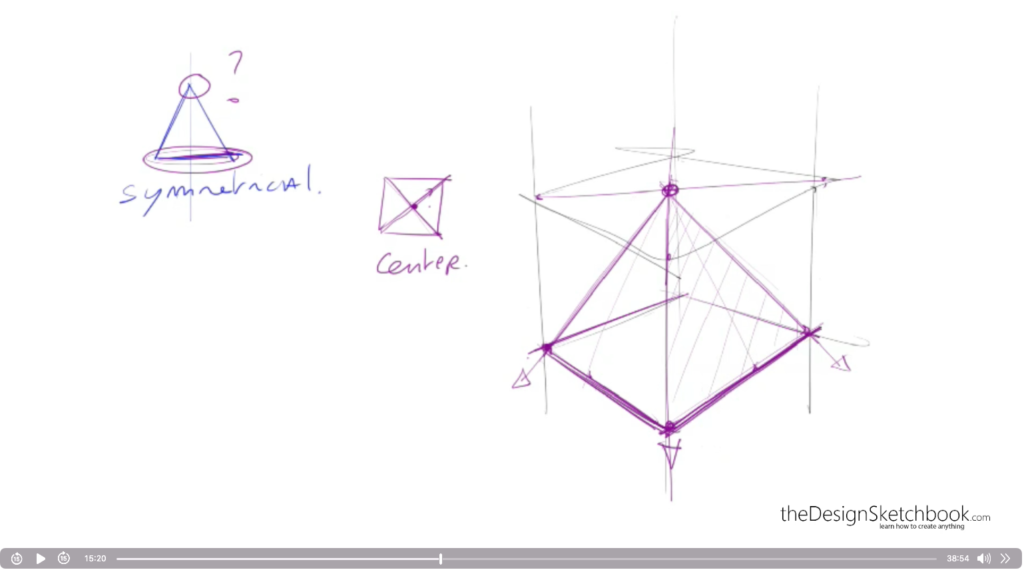
- We use the cube as a base to draw a pyramid.
- The cube drawing becomes the “construction lines”.
- Make sure to draw it with light pen pressure.
So you can draw the pyramid more boldly to create contrast. - To learn more: 6 Tips to improve your quality of lines!

- To find the “peak” of the pyramid, trace the diagonals of a face to find its center.
- Connect the peak to the 4 corners of the opposite face.
- Try different viewpoints using the exact same technique!
- It’s magic 🙂
8. Draw a sphere (the easy way)

- Avoid time-consuming shading.
- In design sketching, you can draw a sphere super fast using the 2 ellipses.
- To practice more: How to draw spheres with easy shadow.
9. Draw a cylinder and its variations

- Use this simple technique to draw a cylinder starting with its 2 ellipses.
- Create variations by twisting the profile.
- Make sure they are symmetrical.
- To practice more: How to draw bottles easily
10. Assemble simple shapes to create advanced forms!

- Assemble random 2d basic shapes of your choice (square, triangle, and circle)
- Use the basic volumes (cube, pyramid, cylinder, and sphere) to draw them in perspective.
- Note: In perspective, a square could become a cube or a cylinder. It’s up to you!
- To practice more: How to draw with the “LEGO BLOCK technique”
11. Level up your sense of 3D observation!

- Look around you
- Select simple products
- Visualize the basic forms they are composed.
- For example:
My GoPro camera is made of a big box.
The lens is made of a smaller box and a cylinder. - To practice more: How to draw a GoPro camera? (Link below)
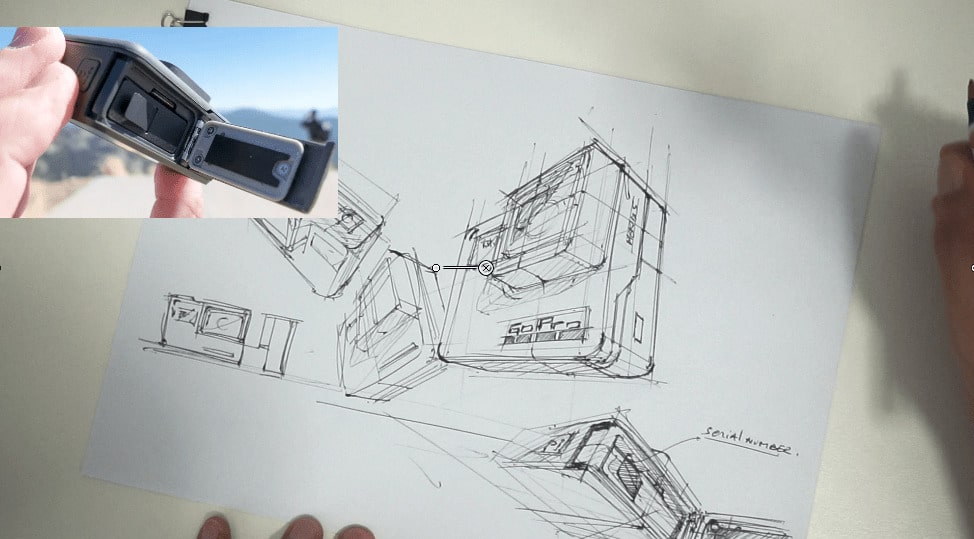
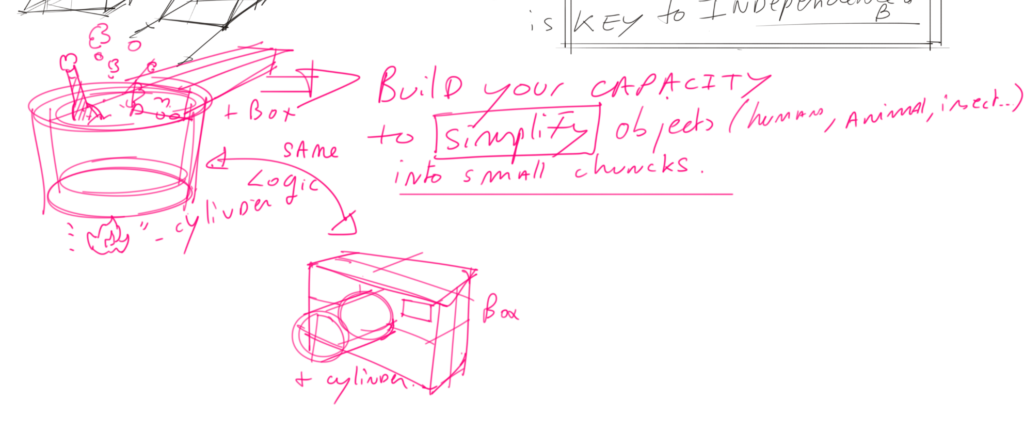
- This pan and camera are different.
- However, they are both made of a cylinder and a box!
- They are more look-alike than it seems.
12. SKETCHING ROUND UP
- Right-Click + Save as… to download the pictures for your notebook.
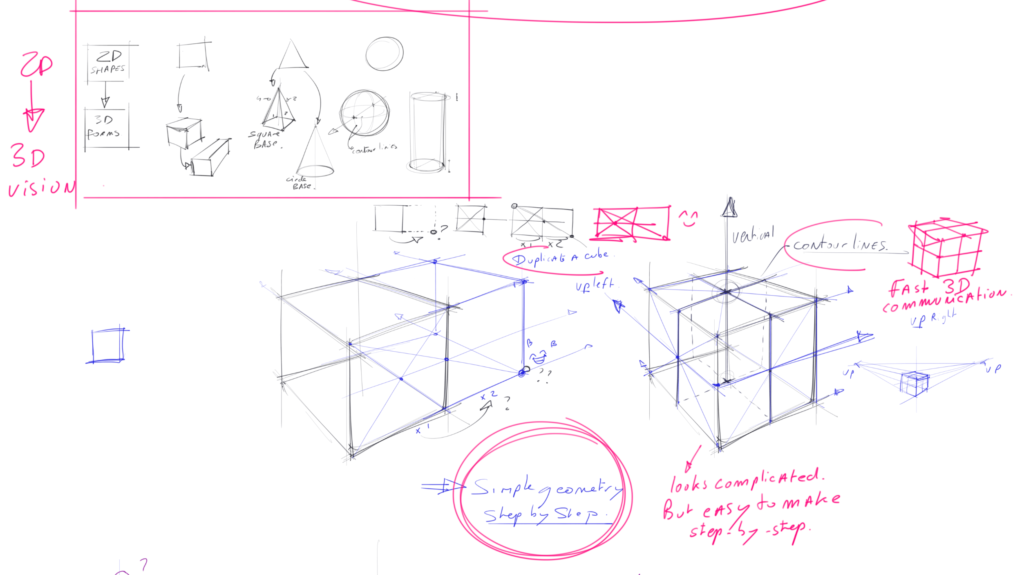
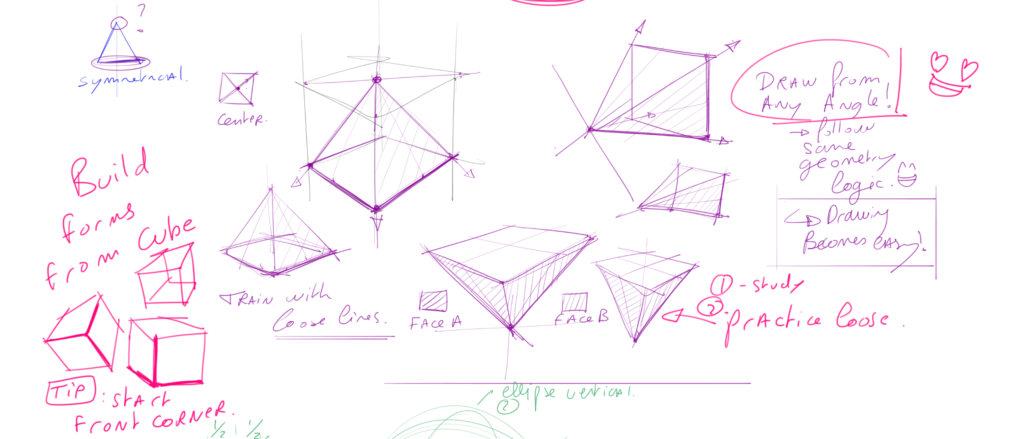
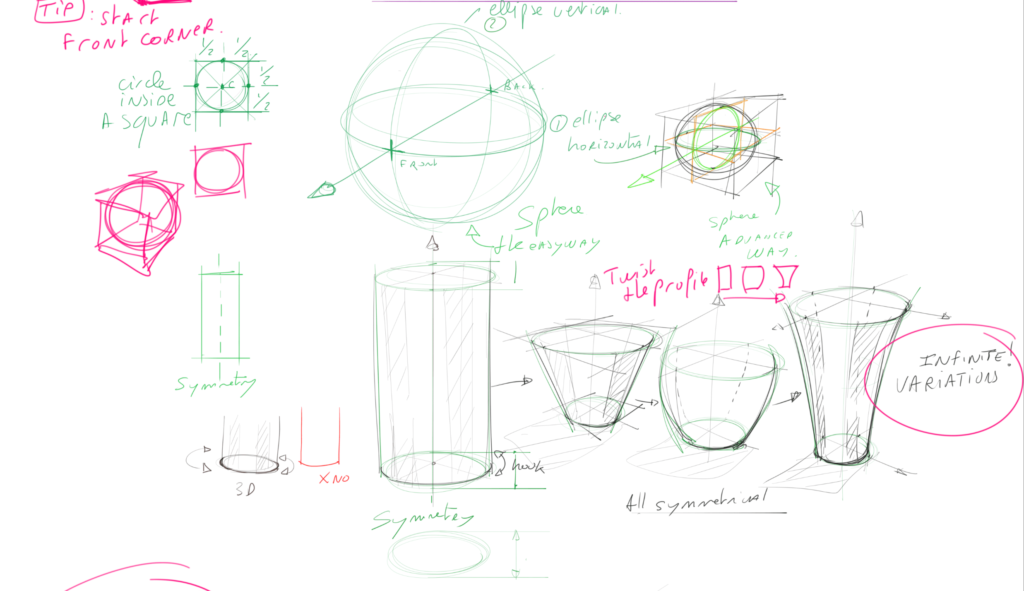

After completing this beginner sketching tutorial,
- you will see your quality of lines boosted
- your 3D vision will be much more accurate
- best of all, ready to build new and advanced product designs by yourself!
Wrap-Up!
After diving into this beginner sketching workshop, you’ve now got a solid understanding of how to draw the 4 basic forms in art and design.
Remember:
- Start Simple: We began with the 3 basic shapes: the square, triangle, and circle. From these, we learned to visualize and draw the cube, pyramid, sphere, and cylinder, forming the foundation of all 3D sketches.
- Master the Basics: Techniques like understanding how a circle becomes an ellipse in perspective, drawing “invisible” lines to create volumes, utilizing line weight, and mastering the “Master Cube” give you the toolkit to transform 2D shapes into 3D volumes.
- Practice in Perspective: Drawing the horizon line, duplicating cubes, and building advanced forms using simple geometry are crucial for enhancing your 3D vision.
- Assemble and Create: By assembling basic shapes, you can create complex and unique designs. It’s all about seeing the world in basic forms and then letting your creativity flow.
- Observe and Learn: Look around you, and recognize how everyday objects are composed of these basic forms. This will sharpen your observational skills and inspire your design work.
With these principles, your lines will become more confident, your 3D vision will improve, and you’ll be ready to tackle any design challenge, from product design to character sketches.
Keep practicing, keep experimenting, and let your imagination run wild.
Now, you’re not just sketching; you’re building a world of your own.
And hey, if you enjoyed this tutorial or have any questions, drop a comment below or let me know if you’d like more of these video formats by email. Let’s keep sketching together!
Happy designing!
Cheers,
Chou-Tac


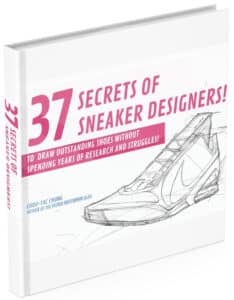
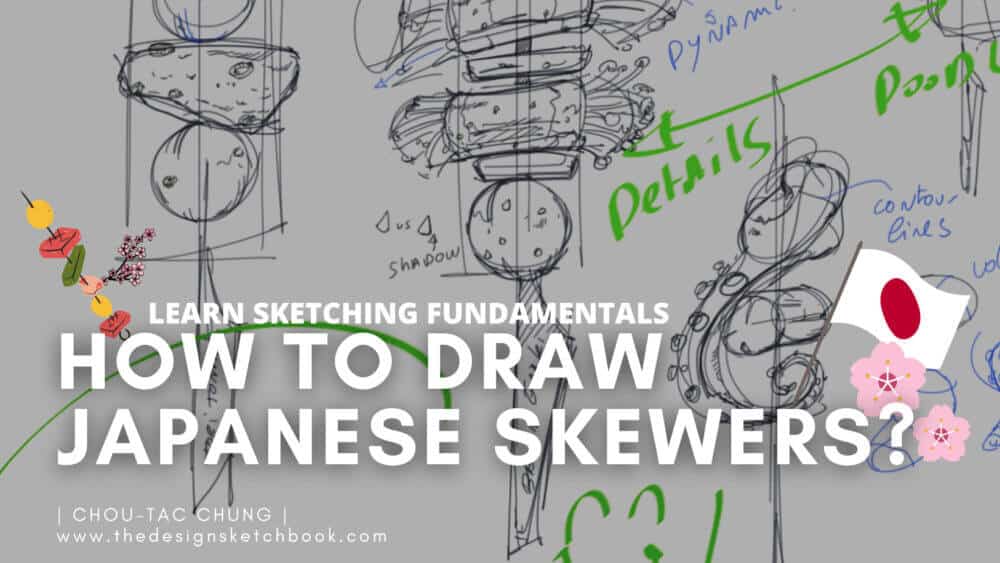
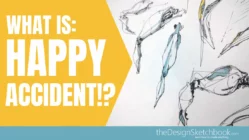






Excelente contenido para aprender y para enseñar .Muchas Gracias por compartir
Estoy feliz porque te gustas la video de tutorial y ayudarte a dibujar las formas del arte y diseño.
Thanks Aurea.